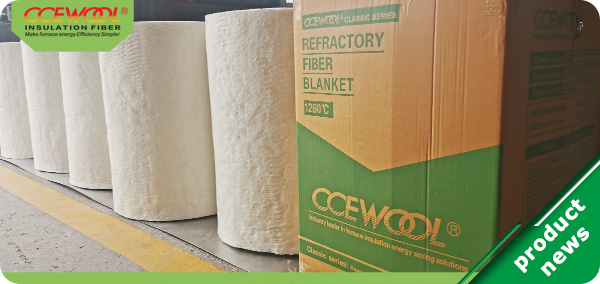Ceramic fiber blankets are renowned for their exceptional thermal insulation properties, making them vital components in various high-temperature applications. A key factor that defines their effectiveness is their thermal conductivity, a property that influences the material's ability to resist heat transfer. In this article, we delve into the concept of thermal conductivity and explore its significance in the realm of ceramic fiber blankets.
Defining Thermal Conductivity:
Thermal conductivity is a material property that measures its ability to conduct heat. Specifically, it quantifies how efficiently a material transfers thermal energy through conduction. For ceramic fiber blankets, low thermal conductivity is desirable, as it indicates a material's capacity to resist the flow of heat, making it an effective insulator.
Factors Influencing Thermal Conductivity in Ceramic Fiber Blankets:
Fiber Type and Composition:
Different ceramic fiber blankets may utilize varying types of ceramic fibers, such as alumina-silicate or high-purity alumina fibers. The composition and quality of these fibers play a crucial role in determining the overall thermal conductivity of the blanket.
Density:
The density of the ceramic fiber blanket also impacts thermal conductivity. Generally, lower densities contribute to lower thermal conductivity, as there is less material for heat to traverse through.
Temperature Grade:
Ceramic fiber blankets come in various temperature grades, and each grade is designed for specific temperature ranges. The temperature grade can influence thermal conductivity, with blankets designed for higher temperatures often exhibiting enhanced insulating properties.
Importance in High-Temperature Applications:
Ceramic fiber blankets find extensive use in industries such as metallurgy, petrochemical, and manufacturing, where high temperatures are prevalent. Their low thermal conductivity ensures efficient insulation, protecting equipment, structures, and personnel from the harsh effects of heat.
Conclusion:
In summary, the thermal conductivity of a ceramic fiber blanket is a critical parameter that defines its insulation capabilities. A lower thermal conductivity signifies better insulation performance, making ceramic fiber blankets invaluable in applications where temperature control and heat resistance are paramount. When selecting or utilizing these blankets, understanding their thermal conductivity characteristics is essential for optimizing their performance in diverse industrial settings.
Post time: Dec-11-2023


